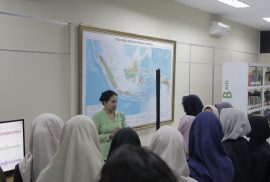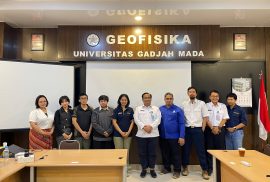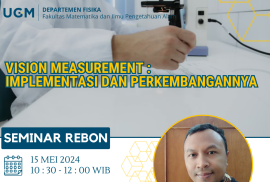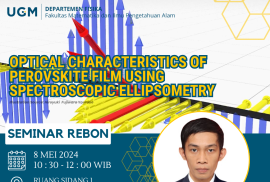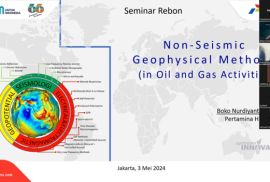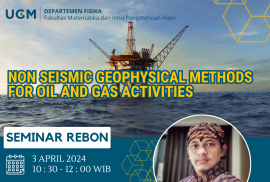[vc_row][vc_column][vc_column_text css=””]On Thursday, 16 May 2024, the Department of Physics UGM received a student visit from UIN Maulana Malik Ibrahim Malang. This activity began with a welcoming ceremony from the Department of Physics UGM in the courtroom 1 of the Department of Physics, then continued with the presentation of the Masters study programme in the Department of Physics, namely the Physics Masters study programme.
The presentation of the Physics study programme was delivered by Mirza Satriawan, S.Si., M.Si., Ph.D. as the head of the Physics Masters study programme. In his presentation, the students were given information about the Master of Physics study programme, a list of courses, lecture facilities, procedures for registering for study programmes, scholarships, alumni networks, career paths and others. The presentation of the study programme was completed followed by a question and answer session and the awarding of plaques.[/vc_column_text][/vc_column][/vc_row][vc_row][vc_column width=”1/3″][vc_single_image image=”13257″ img_size=”large” css=””][/vc_column][vc_column width=”1/3″][vc_single_image image=”13259″ img_size=”large” css=””][/vc_column][vc_column width=”1/3″][vc_single_image image=”13258″ img_size=”large” css=””][/vc_column][/vc_row][vc_row][vc_column][vc_column_text css=””]

